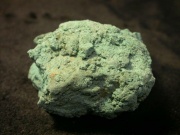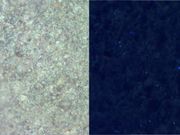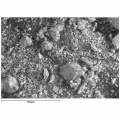Celadonite
Jump to navigation
Jump to search
Description
A soft, gray-green, iron silicate mineral. Celadonite was first described in 1847 on Mr. Baldo near Verona, Italy. The Mica type mineral has been found as a Pigment in some Chinese and Indian paintings. It is one of two green silicate minerals that are commonly called Green earth. The other is Glauconite.
Synonyms and Related Terms
green earth; celadonita (Esp.); Seladonit (Deut.), Celadonit (Deut.); céladonite (Fr.); seladonitis (Gr.); celadonite (It., Port.); terra verde (It.); groene aarde (Ned.)
Physical and Chemical Properties
- Composition = K(Mg,Fe2+)(Fe3+,Al)[Si4O10](OH)2
- Mohs Hardness = 2
- Density = 2.5-2.7 g/ml
- Refractive Index = 1.62
- Crystal = monoclinic
- Cleavage = perfect
- Luster = waxy to dull
Additional Images
Resources and Citations
- R. J. Gettens, G.L. Stout, Painting Materials, A Short Encyclopaedia, Dover Publications, New York, 1966 Comment: density 2.5-2.7 and ref.index.1.62
- Ralph Mayer, A Dictionary of Art Terms and Techniques, Harper and Row Publishers, New York, 1969 (also 1945 printing)
- Wikipedia: Celadonite (Accessed Sept. 2, 2005 and March 2025) mohs=2, spec. grav=3)
- The American Heritage Dictionary or Encarta, via Microsoft Bookshelf 98, Microsoft Corp., 1998






